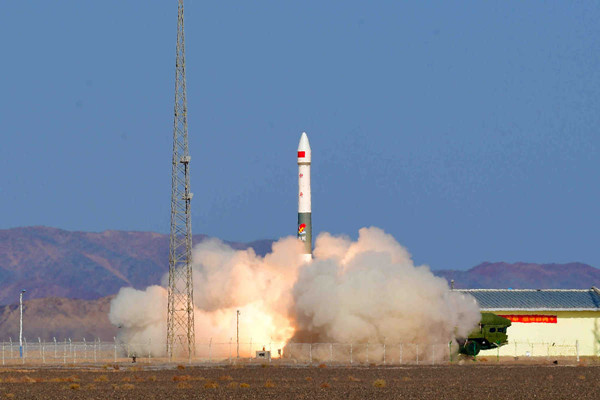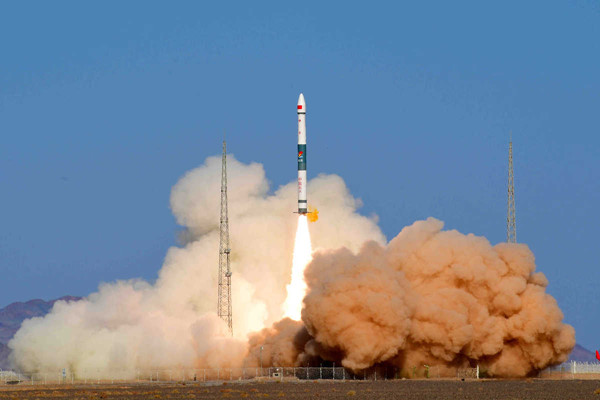Kuaizhou lifts off successfully, places satellite in orbit
[Video by Wang Ruilin/For gojilin.gov.cn]

China launches the Jilin-1 Gaofen 02F satellite on top a Kuaizhou-1A carrier rocket at 2:19 pm, Oct 27, 2021, from the Jiuquan Satellite Launch Center in the northwestern Gansu province. [Photo by Wang Jiangbo/chinadaily.com.cn]
China launched a high-resolution Earth-observation satellite into space aboard a Kuaizhou 1A carrier rocket on Wednesday afternoon, according to the China Aerospace Science and Industry Corp.
In a statement, the State-owned space contractor said that the solid-propellant rocket blasted off at 2:19 pm from the Jiuquan Satellite Launch Center in northwestern China, and placed the satellite — a Jilin-1 Gaofen-02F — into a preset orbit shortly after. The mission marked the 12th flight of the Kuaizhou 1A.
Developed by Changguang Satellite Technology in Northeast China's Jilin province, the Jilin-1 Gaofen-02F is a high-resolution optical remote-sensing satellite.
Kuaizhou is the largest solid-propellant rocket class in China. The country's other main rocket class, the Long March series, mainly relies on liquid fuel.
According to CASIC, the 20-meter tall Kuaizhou 1A has a liftoff weight of about 30 metric tons. It is capable of taking 200 kilograms of payload into a sun-synchronous orbit, or 300 kg of payload into a low-Earth orbit.
Since its maiden flight in January 2017, the rocket has lifted 21 satellites into space.

China launches the Jilin-1 Gaofen 02F satellite on top a Kuaizhou-1A carrier rocket at 2:19 pm, Oct 27, 2021, from the Jiuquan Satellite Launch Center in the northwestern Gansu province. [Photo by Wang Jiangbo/chinadaily.com.cn]
CASIC began to develop the Kuaizhou series in 2009 as a low-cost, quick-response product for the commercial space market. The company has built a manufacturing complex for the series at the 68.8-square-kilometer Wuhan National Space Industry Base in Central China's Hubei province. The factory has begun first-phase operations with an initial production capacity of 20 Kuaizhou-series rockets a year.
Preparations for the second launch attempt of the Kuaizhou 11, a new model developed by CASIC, is also underway. The rocket's first attempted launch from Jiuquan failed in July 2020.
The Kuaizhou 11 stands 25 meters tall, and has a diameter of 2.2 meters. With a liftoff weight of 78 metric tons, it will be able to place a 1-ton payload into a sun-synchronous orbit at an altitude of 700 kilometers, according to its designers.
Once it becomes operational, it will be the most powerful solid-propellant carrier rocket in China. Currently, the strongest solid-propellant carrier rocket in the country is the Long March 11, which has a length of 20.8 meters, a diameter of 2 meters and a liftoff weight of 58 tons.
